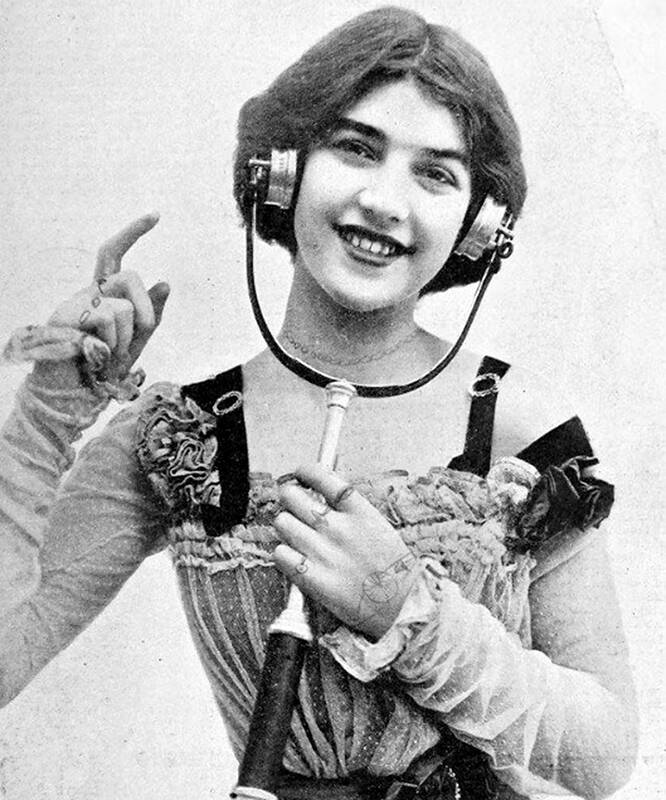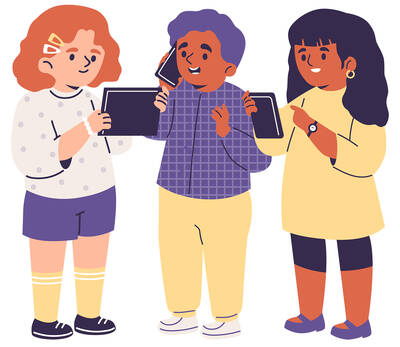Continued from yesterday(延續自昨日)
https://www.taipeitimes.com/News/lang
Thanks to the 20th century breakthroughs in portable music-playing devices, there are now lightweight headphones that are easy to carry around. People are now commonly seen walking while listening to music using headphones, which come in various designs to meet people’s different needs.

Photo: Ivy English I 照片:常春藤
The term headphones generally refers to a device that allows a single user to listen to an audio source privately. Specifically, headphones are a pair of small loudspeakers worn around the head over the ears. Modern headphones have soft earpads covering the loudspeakers, which not only provide comfort but also increase audio quality. These pads also help block out noises from outside and keep sounds produced by the headphones from being heard by others.
As audio systems became smaller, so did headphones. Some people now prefer tiny speakers called earphones. Inserted into the ear canal, earphones come with cushions and provide a more direct connection to the sound being played. A similar device called earbuds differs from earphones in that it lacks cushions. Lightweight and portable, earbuds—both wired and wireless—and earphones are most suitable for those who can’t live without music. However, they may be uncomfortable to wear for long periods of time.
Headphones with different functions have also appeared. One example is headsets equipped with microphones that can be moved at will. Headsets are ideal for conducting online meetings and playing online games. Cutting-edge devices like bone-conduction headphones, which send sound waves through a wearer’s skull without covering the ears, have also amazed people. As audio technology continues to advance, it’s anyone’s guess how future generations will enjoy their music.

Photo: Ivy English I 照片:常春藤
多虧二十世紀可攜式音樂播放裝置的突破,現在有了方便隨身攜帶的輕量耳機。現在很常看到人們戴耳機邊走邊聽音樂,而耳機有著各式設計來滿足人們的不同需求。
headphones這一詞通常指的是讓單一使用者能私下聽音訊的裝置。具體來說,headphones(譯註:中文譯為頭戴式耳機)是一種能戴在頭上、放置在雙耳上的小型喇叭組。現代的頭戴式耳機有軟墊覆蓋住喇叭,這不僅提供了舒適還提升了音質。這些軟墊也有助於阻絕外來的噪音,並讓耳機產生的聲音不讓他人聽見。
正如音響系統變得更小,耳機也是如此。有些人現在偏好稱作入耳式耳機的微小喇叭。這種耳機可以插入耳道,有著墊子且提供了與播放的聲音更直接的連結。一款與入耳式耳機相似的裝置被稱為耳塞式耳機,不同之處在於沒有墊子。輕便又易攜帶的耳塞式耳機 —— 有有線款也有無線款 —— 以及入耳式耳機最適合沒有音樂就活不下去的人。但是長時間戴著這些耳機可能會覺得不舒服。
有著不同功能的耳機也出現了。一個例子是配備有可任意移動之麥克風的耳機麥克風。耳機麥克風適合進行線上會議以及玩線上遊戲。像是骨傳導耳機——透過穿戴者的頭骨傳遞聲波而不會覆蓋耳朵 —— 等最新的裝置也令人大為驚奇。隨著聲音科技持續發展,未來世代會如何享受音樂,誰也說不準。
What Did You Learn?
1. Which of the following is NOT true about headphones’ design?
(A) The first device that allowed people to listen independently was not portable.
(B) The DT 48 can be seen as an improved version of Baldwin’s design.
(C) Headphones nowadays are smaller than their original ones.
(D) Baldwin’s design looked like a medical instrument that doctors use today.
2. According to the Day 1 passage, who made headphones more comfortable on the ears?
(A) Nathaniel Baldwin (B) The US Navy (C) Eugen Beyer (D) John C. Koss
3. Which of the following statements is true regarding the devices mentioned in the passages?
(A) Earbuds are lighter than the Electrophone system.
(B) Earphones designs were adopted from the DT 48.
(C) Both headphones and earphones can fit inside the ear canal.
(D) The headphones that the Navy used in the 1900s were wireless.
答案:1. (D) 2. (C) 3. (A)
Words in Use
1. privately adv. 私下地
My brother told me privately that he broke our mother’s favorite vase.
我弟私下告訴我,他打破了媽媽最愛的花瓶。
2. comfort n. 舒適,舒服(不可數)
A blanket provides comfort on chilly days.
一條毯子可以在冷冽的日子中帶來舒適。
3. insert vt. 插入
insert A into / in B 將A插入B
Insert the key into the hole, and you can open the box.
將該鑰匙插進洞內,你就能打開這只箱子了。
4. cushion n. 墊子
The airplane seat comes with a soft cushion.
飛機上的座位有軟墊。
5. wired a. 有線的
wireless a. 無線的
A wired network uses cables to link devices.
有線網路使用電纜來連接裝置。
Practical Phrases
1. come in... 有……(各種顏色、大小等)
This popcorn comes in various flavors.
這款爆米花有各種口味。
2. meet one’s need 滿足∕符合某人的需求
The shop customizes shoes to meet buyers’ needs.
那間店會客製化鞋子來滿足買家的需求。
3. block out... / block... out 阻擋∕抑制……
Sunglasses block out the sun’s glare.
太陽眼鏡能阻擋刺眼的陽光。
(Just) as + S + V, so + 倒裝句
正如∕就如同……一樣,……也……
As humans need nutrients to grow, so do plants require water and sunlight to thrive.
正如人類成長需要養分,植物也需要水和陽光來生長茁壯。
5. at will 任意地,隨意地
Employees at the company are free to schedule their tasks and take breaks at will.
該公司的員工可以隨意安排自己的任務和休息時間。
聽文章朗讀及講解: https://ivy.pse.is/455bfu
本文出自常春藤解析英語雜誌: www.ivy.com.tw

In an effort to fight phone scams, British mobile phone company O2 has introduced Daisy, an AI designed to engage phone con artists in time-wasting conversations. Daisy is portrayed as a kindly British granny, exploiting scammers’ tendency to target the elderly. Her voice, based on a real grandmother’s for authenticity, adds to her credibility in the role. “O2” has distributed several dedicated phone numbers online to direct scammers to Daisy instead of actual customers. When Daisy receives a call, she translates the scammers’ spoken words into text and then responds to them accordingly through a text-to-speech system. Remarkably, Daisy

Bilingual Story is a fictionalized account. 雙語故事部分內容純屬虛構。 Emma had reviewed 41 resumes that morning. While the ATS screened out 288 unqualified, she screened for AI slop. She could spot it a mile away. She muttered AI buzzwords like curses under her breath. “Team player.” “Results-driven.” “Stakeholder alignment.” “Leveraging core competencies.” Each resume reeked of AI modeling: a cemetery of cliches, tombstones of personality. AI wasn’t just changing hiring. It was draining the humanity from it. Then she found it: a plain PDF cover letter. No template. No design flourishes. The first line read: “I once tried to automate my

Every May 1, Hawaii comes alive with Lei Day, a festival celebrating the rich culture and spirit of the islands. Initiated in 1927 by the poet Don Blanding, Lei Day began as a tribute to the Hawaiian custom of making and wearing leis. The idea was quickly adopted and officially recognized as a holiday in 1929, and leis have since become a symbol of local pride and cultural preservation. In Hawaiian culture, leis are more than decorative garlands made from flowers, shells or feathers. For Hawaiians, giving a lei is as natural as saying “aloha.” It shows love and

1. 他走出門,左右看一下,就過了馬路。 ˇ He walked outside, looked left and right, and crossed the road. χ He walked outside and looked left and right, crossed the road. 註︰並列連接詞 and 在這句中連接三個述語。一般的結構是 x, y, and z。x and y and z 是加強語氣的結構,x and y, z 則不可以。 2. 他們知道自己的弱點以及如何趕上其他競爭者。 ˇ They saw where their weak points lay and how they could catch up with the other competitors. χ They saw where their weak points lay and how to catch up with the other competitors. 註:and 一般連接同等成分,結構相等的單詞、片語或子句。誤句中 and 的前面是子句,後面是不定詞片語,不能用 and 連接,必須把不定詞片語改為子句,and 前後的結構才相等。 3. 她坐上計程車,直接到機場。 ˇ She took a cab, which took her straight to the airport. ˇ She took a cab and it took her straight